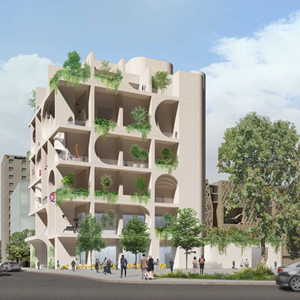
In an act of wilful optimism and resilient hope for Lebanon, the new Beirut Museum of Art (BeMA) has been reimagined around the three central pillars of its mission...
In an act of wilful optimism and resilient hope for Lebanon, the new Beirut Museum of Art (BeMA) has been reimagined around the three central pillars of its mission...
To expand BeMA’s unique work around education and community engagement
• To lead in the development of national and regional conservation practices through the Museum’s exemplary ongoing restoration work
• To disseminate to the broadest possible audience Lebanon’s longstanding artistic and intellectual engagement with modernity through the extraordinary treasure that is its underexposed National Collection of Lebanese art.
With the National Collection occupying the heart of the museum on two of the three gallery floors, the new BeMA presents a unique opportunity to re-read the history, evolution, and legacy of modern art in Lebanon across painting, sculpture, drawing, and photography. Bringing together, for the first time, over 2,300 pieces that span from the 19th century early photographic portrait-paintings through the young nation’s golden age of Abstract Expressionism to the beginnings of politically engaged art of the late 1960s, BeMA’s collection reconstructs the national archive and its history while moving beyond the ubiquitous narratives that have haunted the nation’s reading as both literally and conceptually fragmented, individualistic, derivative or dispersed.
Galleries, Conservation, Education and Performance spaces

ArtDependence Magazine is an international magazine covering all spheres of contemporary art, as well as modern and classical art.
ArtDependence features the latest art news, highlighting interviews with today’s most influential artists, galleries, curators, collectors, fair directors and individuals at the axis of the arts.
The magazine also covers series of articles and reviews on critical art events, new publications and other foremost happenings in the art world.
If you would like to submit events or editorial content to ArtDependence Magazine, please feel free to reach the magazine via the contact page.